
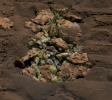
|
Target: Mars Mission: Mars Science Laboratory (MSL) Instrument: Mastcam Image Credit: NASA/JPL-Caltech/MSSS |


|
Target: Mars Mission: Mars Science Laboratory (MSL) Instrument: Mastcam Image Credit: NASA/JPL-Caltech/MSSS |


|
Target: Mars Mission: Mars 2020 Rover Instrument: Planetary Instrument for X-ray Lithochemistry (PIXL) Image Credit: NASA/JPL-Caltech/DTU/QUT |


This labyrinth – with a silhouette of the fictional detective Sherlock Holmes at its center – is used as a calibration target for the cameras and laser that are part of SHERLOC (Scanning Habitable Environments with Raman & Luminescence for Organics and Chemicals), one of the instruments aboard NASA’s Perseverance Mars rover. The image was captured by the Autofocus and Context Imager on SHERLOC on May 11, 2024, the 1,147th day, or sol, of the mission, as the rover team sought to confirm it had successfully addressed an issue with a stuck lens cover.
Read More
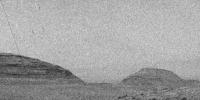
|
Target: Mars Mission: Mars Science Laboratory (MSL) Instrument: Navcam (MSL) Image Credit: NASA/JPL-Caltech |

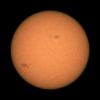
|
Target: Sol (our sun) Mission: Mars 2020 Rover Instrument: Mastcam-Z Image Credit: NASA/JPL-Caltech/Space Science Institute |


This image shows two types of sand dunes on Mars. The small dots are called barchan dunes, and from their shape we can tell that they are upwind. The downwind dunes are long and linear. These two types of dune each show the wind direction in different ways: the barchans have a steep slope and crescent-shaped “horns” that point downwind, while the linear dunes are stretched out along the primary wind direction. Linear dunes, however, typically indicate a wind regime with at least two different prevailing winds, which stretch out the sand along their average direction. In several places in this image, you can find barchan dunes turning into linear dunes as they are stretched out, but they both seem into indicate the same wind direction.
Read More
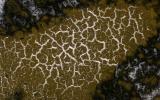
|
Target: Mars Mission: Mars Reconnaissance Orbiter (MRO) Instrument: HiRISE Image Credit: NASA/JPL-Caltech/University of Arizona |

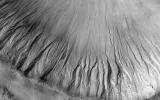
|
Target: Mars Mission: Mars Reconnaissance Orbiter (MRO) Instrument: HiRISE Image Credit: NASA/JPL-Caltech/University of Arizona |

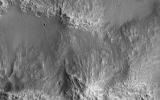
|
Target: Mars Mission: Mars Reconnaissance Orbiter (MRO) Instrument: HiRISE Image Credit: NASA/JPL-Caltech/University of Arizona |

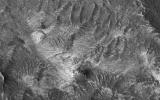
|
Target: Mars Mission: Mars Reconnaissance Orbiter (MRO) Instrument: HiRISE Image Credit: NASA/JPL-Caltech/University of Arizona |